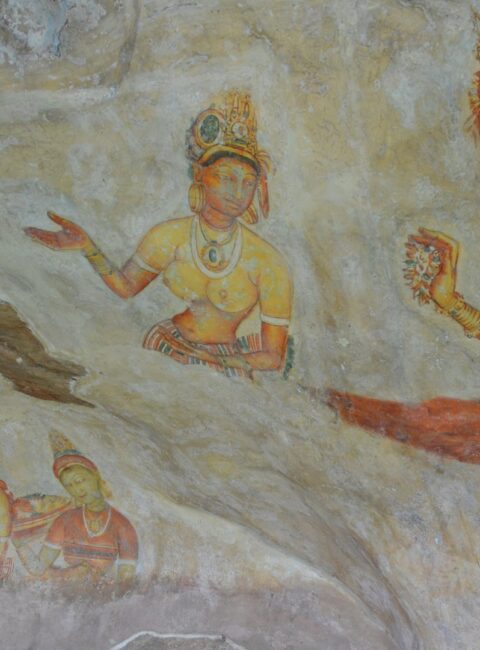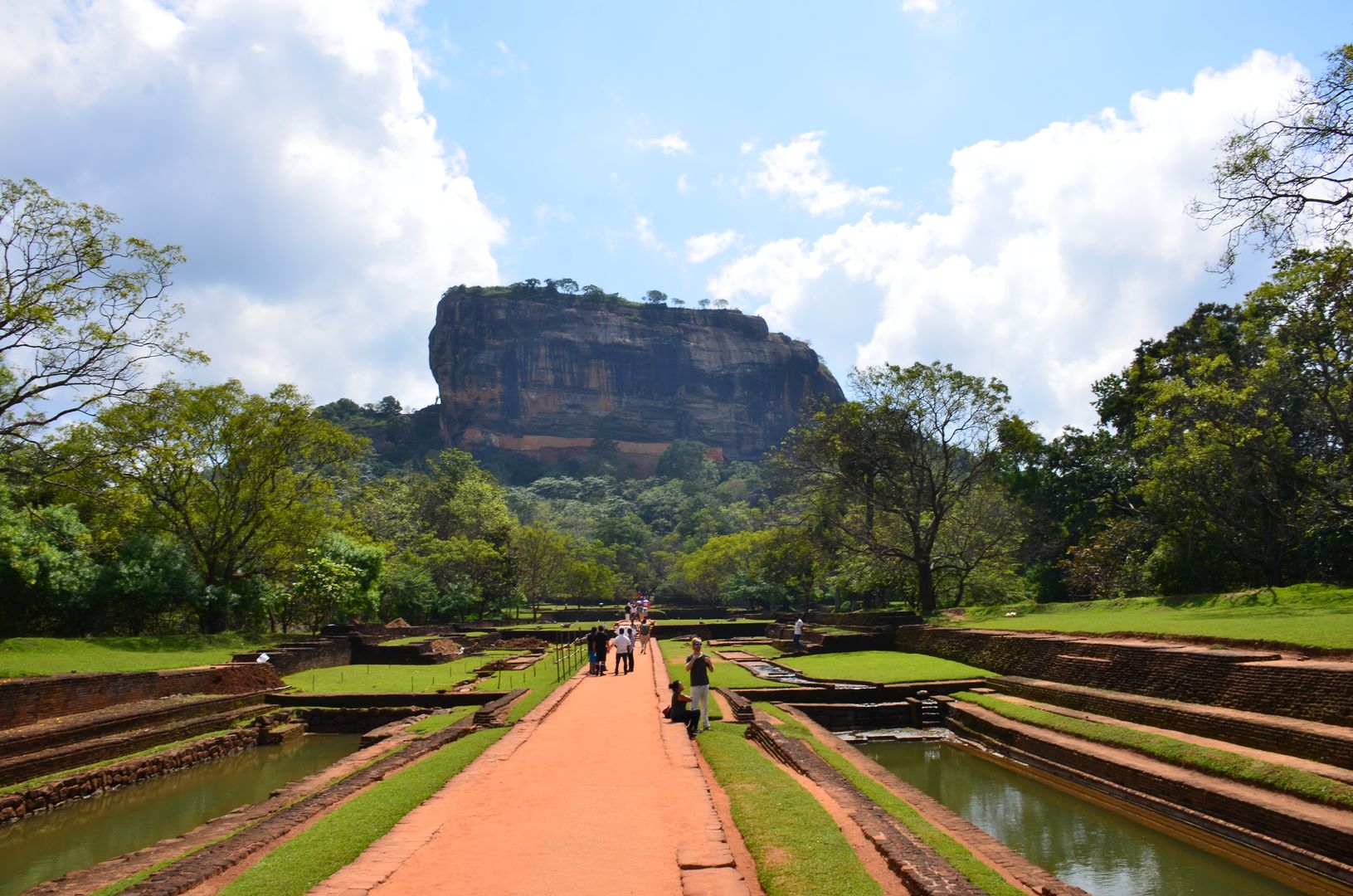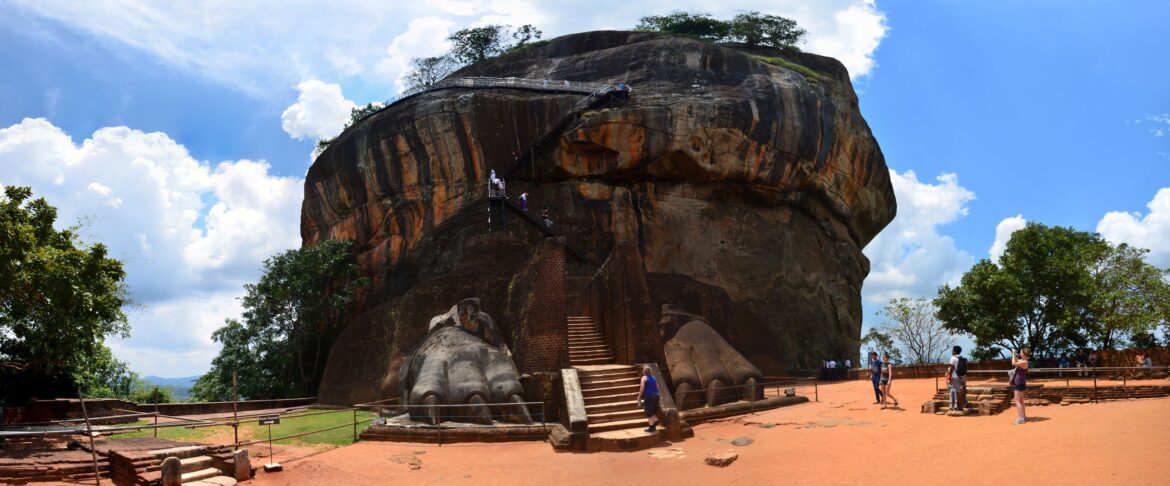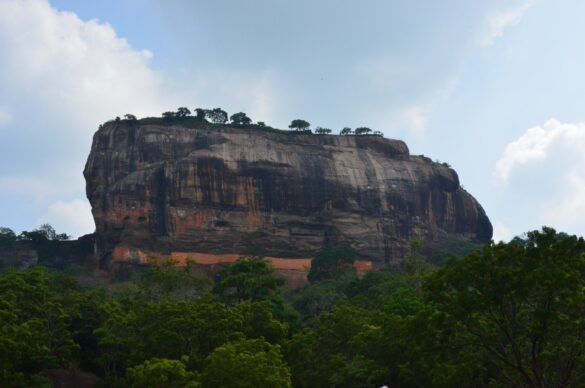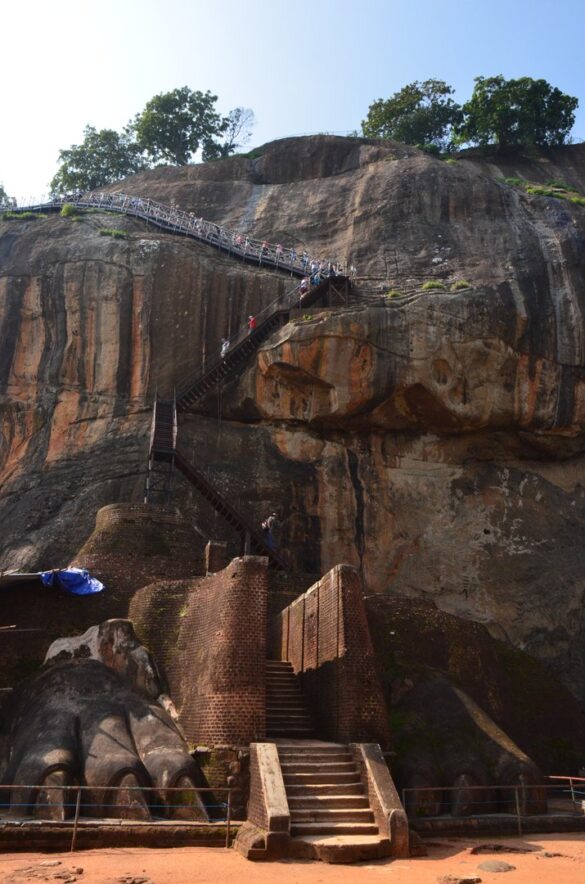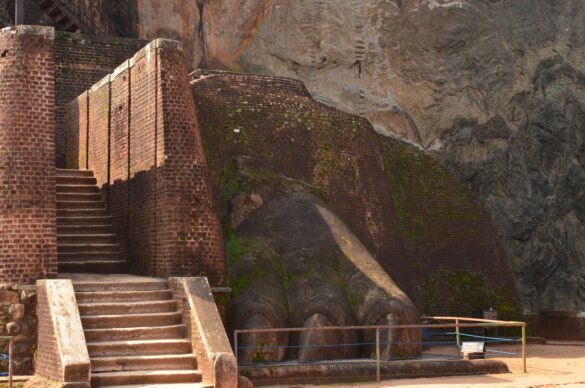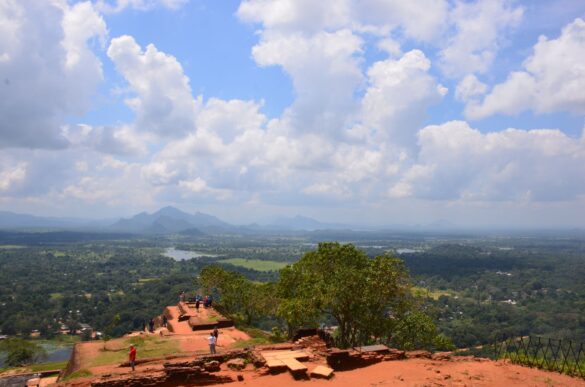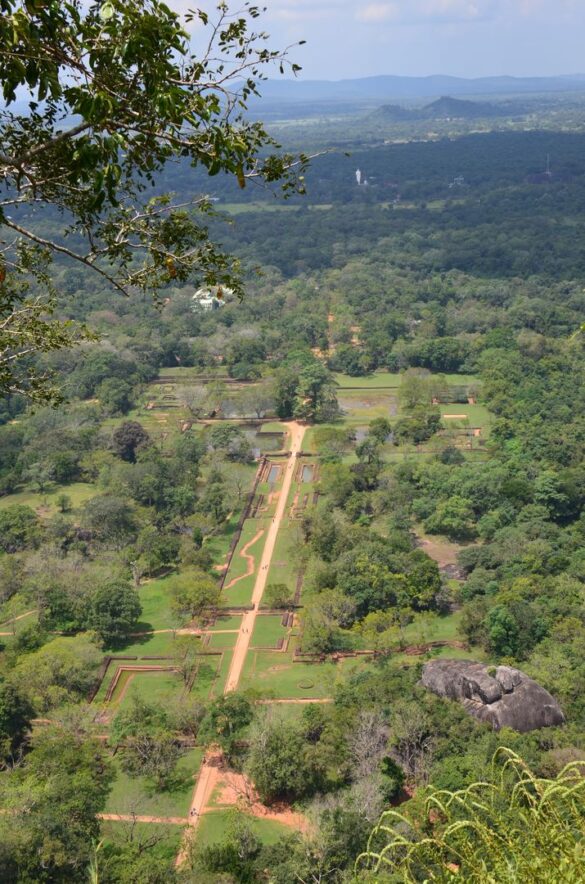Sigiriya - Lion Rock
Sigiriya... Built by an obsessed monarch in the 5th century, Sigiriya or Lion Rock is an astonishing feat of engineering and construction.
The most striking portion of Sigiriya, a terracotta and grey core of rock set in the cultural heart of Sri Lanka, rises a sheer 200 metres above a forested plain, its flattened summit sloping gently. A series of moats, ramparts and water gardens - remnants of an ancient city - spread out on two sides of the rock, with the remains of a pair of giant stone lion’s paws still guarding the staircase that leads to the summit, once occupied by a royal palace.
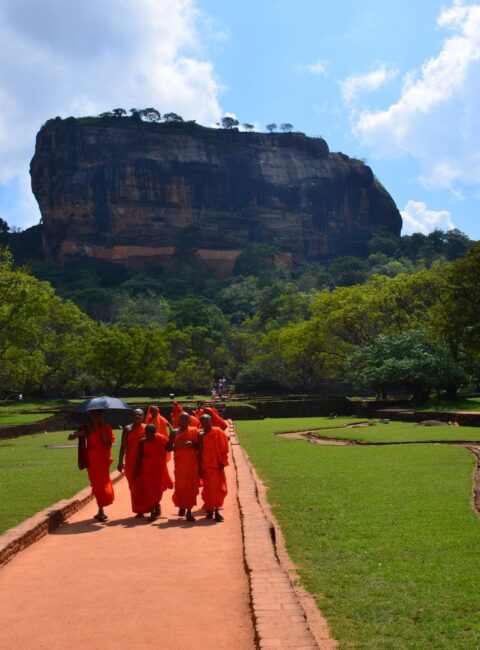
SIGIRIYA ROCK FORTRESS AND CITY
Built by an obsessed monarch in the 5th century, Sigiriya or Lion Rock is an astonishing feat of engineering and construction. The most striking portion of Sigiriya, a terracotta and grey core of rock set in the cultural heart of Sri Lanka, rises a sheer 200 metres above a forested plain, its flattened summit sloping gently. A series of moats, ramparts and water gardens – remnants of an ancient city – spread out on two sides of the rock, with the remains of a pair of giant stone lion’s paws still guarding the staircase that leads to the summit, once occupied by a royal palace.
Designated a World Heritage Site by UNESCO in 1982, Sigiriya is Asia’s best preserved city of the first millennium, showing complex urban planning around the base of the rock, combined with sophisticated engineering and irrigation skills in the palace perched on the summit. It is considered it to be one of the oldest tourist attractions in the world with visitors recording their impressions in some of the earliest-known graffiti.
For just two decades in the 5th century AD, Sigiriya rose to prominence following a power struggle between two brothers, and an act of patricide that saw the then king walled-up alive by his son, Kasyapa. Fearful that his defeated brother would return from exile to extract vengeance, Kasyapa shifted the capital to Sigiriya and in 477 AD, he ordered the construction of the magnificent city around the base of the rock, and decreed that his palace should stand on top, a fortress that would keep him safe from retribution. Just seven years later, his astonishing palace in the sky was ready, complete with terraces and a complex system of irrigation.
Kasyapa clearly had an eye for beauty. The pleasure gardens include a series of symmetric pools, channels and fountains that still spurt water after 1,500 years. Partway up the rock are the famous Sigiriya frescoes, featuring 21 bare-breasted damsels that may represent celestial nymphs, but were surely modeled on Kasyapa´s own consorts. Halfway you´ll encounter a pair of giant lion´s paws, part of the original entrance, which required visitors to pass through the open mouth of a lion. The summit yields a dramatic vista of the surrounding jungle and contains the foundations of the palace complex, replete with bathing pools.
John Still in 1907 suggested, “The whole face of the hill appears to have been a gigantic picture gallery… the largest picture in the world perhaps”.
The paintings would have covered most of the western face of the rock, covering an area 140 metres long and 40 metres high. There are references in the graffiti to 500 ladies in these paintings. However, many more are lost forever, having been wiped out when the Palace once more became a monastery − so that they would not disturb meditation.
Some more frescoes, different from the popular collection, can be seen elsewhere on the rock surface, for example on the surface of the location called the “Cobra Hood Cave”.
Although the frescoes are classified as in the Anuradhapura period, the painting style is considered unique;[citation needed] the line and style of application of the paintings differing from Anuradhapura paintings. The lines are painted in a form which enhances the sense of volume of the figures. The paint has been applied in sweeping strokes, using more pressure on one side, giving the effect of a deeper colour tone towards the edge. Other paintings of the Anuradhapura period contain similar approaches to painting, but do not have the sketchy lines of the Sigiriya style, having a distinct artists´ boundary line. The true identity of the ladies in these paintings still have not been confirmed. There are various ideas about their identity. Some believe that they are the wives of the king while some think that they are women taking part in religious observances. These pictures have a close resemblance to some of the paintings seen in the Ajanta caves in India.
The frescoes, depicting beautiful female figures in graceful contour or colour, point to the direction of the Kandy temple, sacred to the Sinhalese.
